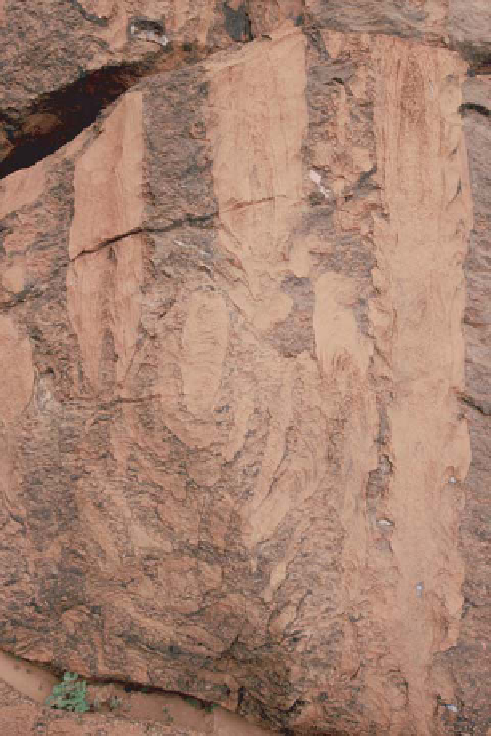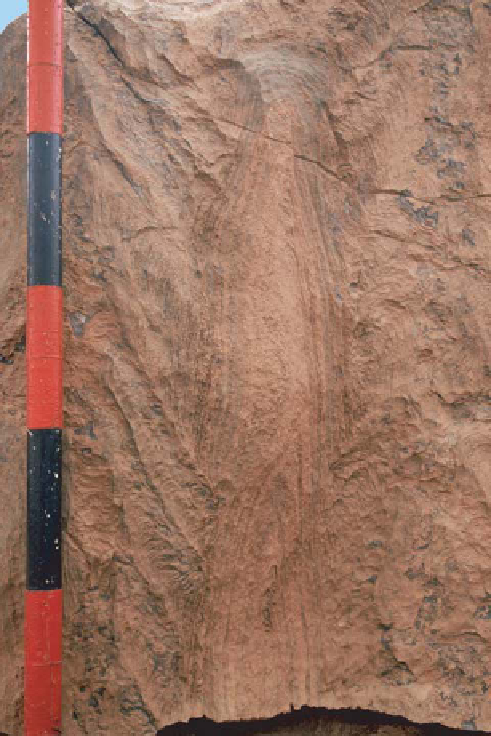Geology Reference
In-Depth Information
(a)
(b)
PS2
PS2
PS2
PS2
PS1
PS2
PS1
10 cm
Fig. 11.
Stacked parasequences in
Jacutophyton sahariensis
. (a) Branching elements of
Jacutophyton sahariensis
(PS1) are
onlapped by conical laminae during initial development of a second-generation
Jacutophyton
(PS2) whose central cone
nucleated directly atop the central cone of PS1. Jacob staff is marked in 10 cm intervals. (b) Several branching elements of
J. sahariensis
(PS1) develop into central cones and form the base of a second generation of
Jacutophyton
(PS2).
(cf. Bertrand-Sarfati & Moussine-Pouchkine, 1999)
and in the gradational transition from
Conophyton
to
Baicalia Safi a
and
Baicalia mauritanica
at the
top of the R3 biostrome (Fig. 10c, V6).
The extraordinary variability of biostromal
parasequences in the Atar Formation results, in
part, from the vertically and laterally variable
deposition of interstromatolitic material. Outcrop
exposures record the small spatial scales (a few to
a few tens of metres laterally, a few centimetres
to tens of centimetres vertically) of variability,
but do not permit detailed mapping of interstro-
matolitic debris. Laterally variable deposition
probably results from the cratonal, regionally
low-relief environments of the Atar Group
(Bertrand-Sarfati & Moussine-Pouchkine, 1988),
wherein variation in water energy (e.g. chan-
nelling of tidal surges, relief of the substrate),
localized production of water-column carbonate
(e.g. whitings) and restricted production of
stromatolitic breccia (e.g. delamination of non-
lithifi ed cones) act together to produce a mosaic
of interstromatolitic facies.
Platy breccia facies are episodically stabilized by
the precipitation of herringbone carbonate cement.
Rarely, herringbone cement is observed coating
both stromatolites and the sedimentary substrate.
In these cases, the thickness of the stromatolitic
component of a single parasequence (i.e. the
height of a
Conophyton
) is typically 100-150 cm,
yet the thickness of the detrital component may
vary from only a few centimetres to tens of cen-
timetres in thickness. As a result, parasequence
boundaries can show dramatic lateral variability.
Furthermore, if the presence of herringbone car-
bonate indicates transport of basinal waters onto





